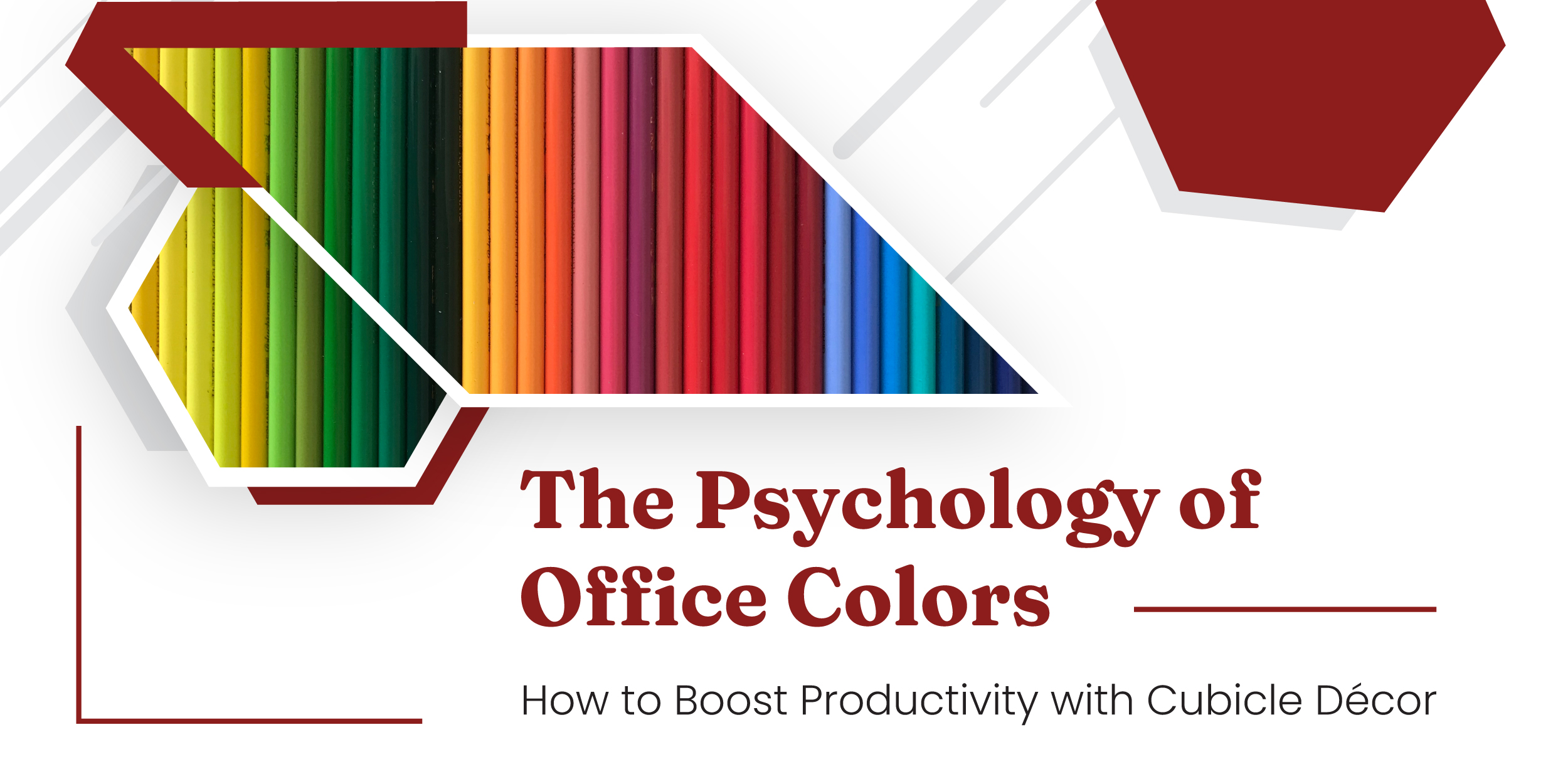The Psychology of Office Colors: How to Boost Productivity with Cubicle Decor
In the realm of office design, the significance of color cannot be overstated. It’s not just about aesthetics; colors can profoundly impact our emotions, mood, and even productivity. In this blog post, we’ll dive into the fascinating world of color psychology and explore how you can harness its power to create a more productive and inviting cubicle workspace.
Understanding Color Psychology
Color psychology is the study of how colors affect human behavior and emotions. Different colors can evoke distinct feelings and reactions, making them a powerful tool in shaping our work environment. When it comes to office cubicles, choosing the right colors can have a transformative effect on your workspace and overall productivity.
The Blues: Calm, Focus, and Productivity
Blue is a color often associated with calmness and productivity. It has a calming effect on the mind and can help reduce stress levels, making it an ideal choice for a high-pressure work environment. Lighter shades of blue, in particular, can enhance focus and concentration, making it an excellent option for cubicle walls or decor accents.
Energize with Yellow
Yellow is a vibrant and energetic color that can add a burst of positivity to your cubicle. It’s known for promoting creativity and optimism. Incorporating yellow into your decor, whether through wall color or accessories, can help boost your mood and creativity during the workday.
Balancing Act with Green
Green represents balance and harmony. It’s often associated with nature and can create a sense of tranquility. This color is excellent for reducing eye strain and promoting a sense of well-being. Consider adding potted plants or green décor elements to your cubicle for a touch of balance and serenity.
Boosting Confidence with Red
Red is a powerful color that can evoke strong emotions. It’s associated with energy, passion, and confidence. While it may be too intense for an entire cubicle color scheme, using red as an accent color can add a touch of excitement and motivation to your workspace.
Evoke Sophistication with Neutrals
Neutral colors like gray, beige, and white provide a clean and sophisticated backdrop for your cubicle. They can create a sense of professionalism and timelessness. Pairing neutrals with vibrant accents can strike the perfect balance between a calm workspace and a creative one.
Personalizing Your Cubicle Decor
Now that you have a better understanding of the psychological effects of colors, it’s time to put this knowledge into action. Here are some tips for personalizing your cubicle decor:
- Choose a Dominant Color: Decide on a dominant color for your cubicle walls or furniture. This color should align with your desired emotional and psychological state.
- Accent Colors: Introduce accent colors that complement your dominant color. These accents can come in the form of desk accessories, artwork, or even plants.
- Personal Touches: Incorporate personal items, such as family photos or mementos, to make your cubicle feel like your own. These items can provide comfort and motivation throughout the workday.
- Lighting Matters: Pay attention to the lighting in your cubicle. Natural light is ideal, but if that’s not possible, consider using full-spectrum light bulbs that mimic natural daylight.
- Keep It Tidy: An organized and clutter-free cubicle is essential for maintaining a productive and stress-free environment. Regularly declutter and organize your space.
Color psychology offers a powerful way to transform your cubicle into a productive and inviting workspace. By understanding the emotional and psychological effects of colors, you can choose a color scheme that aligns with your work goals and enhances your overall well-being. Personalizing your cubicle decor with the right colors and personal touches can have a profound impact on your productivity and job satisfaction. So, don’t underestimate the power of color when it comes to crafting your ideal cubicle environment.



